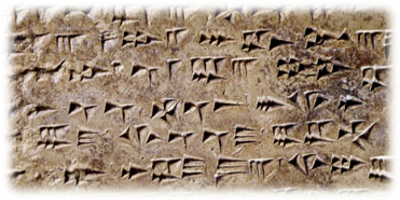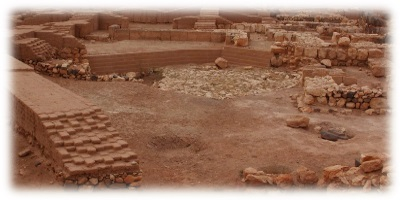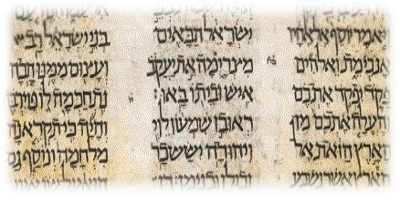The History of Ugarit
Many tablets containing cuneiform (Latin for "wedge shaped") texts have been found throughout the Near East and used to write many different languages including Sumerian, Akkadian and Eblaite. This cuneiform writing was a logogram style of writing where one cuneiform sign represented one word, similar to modern day Chinese. It was found that the cuneiform writing developed out of an older "pictographic" writing. Each pictograph was a picture of what that logogram represented such as in ancient Egyptian Hieroglyphs. Over time the pictures were replaced by the cuneiform.
In 1928 French Archeologists discovered a large collection of cuneiform tablets with a script unlike the previously discovered cuneiform writing. This discovery was made at a site known as "Ras Shamra" near the Mediterranean coast in modern day Syria. The site was later discovered to be the ancient Canaanite city of Ugarit. It was later discovered that the Ugarit cuneiform was a phonogram, or alphabetic, where each cuneiform sign represented one letter of an alphabet. The Ugarit Alphabet was Semitic, the same as Hebrew. Some have even called the writing system of Ugarit "Hebrew cuneiform". Not only is the Ugarit alphabet Semitic, the Ugarit language was also Semitic and almost identical to Hebrew. This was a great discovery for Biblical Hebrew scholars as the Ugarit language was able to shed some light on some Hebrew words of uncertain meaning.
The city of Ugarit was occupied from pre-historic times to about 1200 BCE when it was mysteriously deserted. The tablets with the Ugarit cuneiform were written in its later life (about 1300 to 1200 BCE). It was discovered through the writings of the tablets that the people of the city were worshipers of the same Canaanite gods as their surrounding neighbors including deities as El, Baal, Asherah and even Yahweh. The culture, lifestyles and literary writings were found to be very similar to the Israelites and can also shed much light on the Biblical text.
The origins of the Ugarit cuneiform script are not known but can be assumed that it was derived out of the same Pictographic script used to write Hebrew, just as the Sumerian cuneiform evolved out of a pictographic script. This theory adds to the evidence that the Semitic/Hebrew script is older than previously thought.
The Ugarit Alphabet

The above Ugarit inscription is an Alphabet Chart showing all of the Ugarit letters in order (Ugarit is read from left to right). Not only is this helpful in knowing the actual Ugarit alphabet but also shows that the modern order of the Hebrew alphabet has not changed. There are eight additional letters in the Ugarit alphabet that are not in the Hebrew alphabet, two of which are vowels. It may be possible that these were originally in the Hebrew alphabet but were later dropped (not an uncommon occurrence in the evolution of alphabets around the world). The tablet is missing three letters, the 13th, 14th and 25th letters, and may be broken off the right end of the tablet.
When comparing the pictographic Hebrew script with the Ugarit cuneiform, we find that several of them are virtually identical supporting the idea that this cuneiform was derived out of the older pictographic script. Below are some examples of the similarities.
|
Beyt

|
Dalet

upside down |
Hey

side ways |
|
Vav

side ways |
Kaph

side ways |
Nun

|
|
Samech

|
Quph

side ways |
Resh

side ways |
Hebrew/Ugarit Alphabet Chart
| Name | Pictographic Hebrew | Ugarit Cuneiform | Ugarit Sound |
| Aleph |  | | a |
| Beyt |  | b | |
| Gimel |  | g | |
| | j | ||
| Dalet |  | d | |
| Hey |  | h | |
| Vav |  | w | |
| Zayin |  | z | |
| Hhet |  | ch | |
| Tet |  | t | |
| Yud |  | y | |
| Kaph |  | k | |
| | s | ||
| Lamed |  | l | |
| Mem |  | m | |
| | d | ||
| Nun |  | n | |
| | z | ||
| Samehh |  | s | |
| Ayin |  | gh | |
| Pey |  | p | |
| Tsade |  | ts | |
| Quph |  | q | |
| Resh |  | r | |
| Shin |  | sh | |
| Tav |  | t | |
| Ghayin |  | | g |
| | i, e | ||
| | o, u | ||
| | s |
Ugarit and the Bible
ותאמר שויתי עזר על גבור הרימותי בחור מעם
The passage above is Psalm 89:20 (19 in English Bibles) in Hebrew. This verse is literally translated as: "I placed help over the mighty, I lifted up the chosen one from the people". This verse is classic Hebrew poetry. This form of poetry is parallelism where one idea is expressed in two different ways. This style of poetry is found throughout the book of Psalms and Proverbs. In this verse the first half is paralleled with the second half as demonstrated below;
| I placed | = | I lifted |
| help | = | chosen one |
| over the mighty | = | from the people |
To see more of these parallels, read this chapter from the beginning and notice the parallels in each verse such as in verse 14 (13) where the following parallels are found; you have a mighty arm, strong is your hand, high is your right hand.
The only problem with Psalm 89:20 is that the word "help" is not a parallel with "chosen one". The Hebrew word for "help" is עזר (ezer, underlined in red above). The first letter in this word is an "ayin". In modern Hebrew this letter is silent but the ancient pronunciation was a soft "g" (gh) as in the word "ring". This word would have been pronounced "ghezer".
The Ugarit word ![]() (gezer) means "young man" and is spelled the same as ghezer except for the first letter which is a "gimel". As Ugarit is a Semitic language related to Hebrew, this word was probably used in the ancient Hebrew language as well even though it is not found in the Biblical text. The scribe copying the Psalm 89 text most likely exchanged the gimel for an ayin, both of similar sounds. With the Hebrew word גזר (gezer), we now have a more likely parallelism for this verse;
(gezer) means "young man" and is spelled the same as ghezer except for the first letter which is a "gimel". As Ugarit is a Semitic language related to Hebrew, this word was probably used in the ancient Hebrew language as well even though it is not found in the Biblical text. The scribe copying the Psalm 89 text most likely exchanged the gimel for an ayin, both of similar sounds. With the Hebrew word גזר (gezer), we now have a more likely parallelism for this verse;
| I placed | = | I lifted |
| young man | = | chosen one |
| over the mighty | = | from the people |
דברי עםוס היה נקדים מתקוע
In Amos 1:1 we read that Amos was a "shepherd." The normal Hebrew word for shepherd is רעה (ra'ah). Instead, this passage uses the rare word נקד (noqed, underlined in red above) which is found in only one other passage (2 Kings 3:4) and is applied to Mesha, King of Moab. It is difficult to determine the meaning of Hebrew words that are rarely used in the Biblical text as there is not enough context to make an accurate assessment of the word. By turning to other Semitic languages, the meaning of some words can be found and this is the case with this word. The Ugarit word ![]() (neqed), a closely related word to the Hebrew נקד (noqed), is used for one who is in the sheep business. This is not just a simple shepherd but one who owns or manages a large operation. Thanks to the Ugarit tablets discovered, we are able to understand the Biblical text with more clarity.
(neqed), a closely related word to the Hebrew נקד (noqed), is used for one who is in the sheep business. This is not just a simple shepherd but one who owns or manages a large operation. Thanks to the Ugarit tablets discovered, we are able to understand the Biblical text with more clarity.
The "Associates for Biblical Research" website states the following;
The value of the Ugarit texts for Biblical studies lies in the fact that Mari is located in the vicinity of the homeland of the Patriarchs, being about 200 mi (320 km) southeast of Haran. It thus shares a common culture with the area where the Patriarchs originated. Some documents detail practices such as adoption and inheritance similar to those found in the Genesis accounts. The tablets speak of the slaughtering of animals when covenants were made, judges similar to the judges of the Old Testament, gods that are also named in the Hebrew Bible, and personal names such as Noah, Abram, Laban and Jacob. A city named Nahur is mentioned, possibly named after Abraham's grandfather Nahor (Gn 11:22-25), as well as the city of Haran where Abraham lived for a time (Gn 11:31-12:4). Hazor is spoken of often in the Mari texts and there is a reference to Laish (Dan) as well. A unique collection of 30 texts deals with prophetic messages that were delivered to local rulers who relayed them to the king. The findings at Mari show that the Patriarchal narratives accurately reflect the socioeconomic conditions of that time and place.
Ugarit Inscriptions
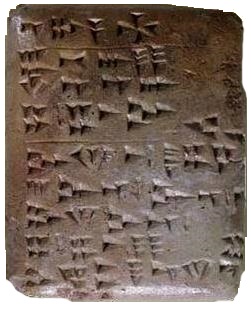
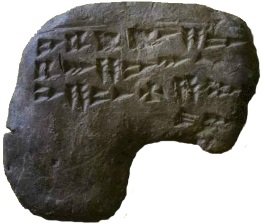
Like what you’re discovering? Continue the journey from Bible reader to translator.
|



